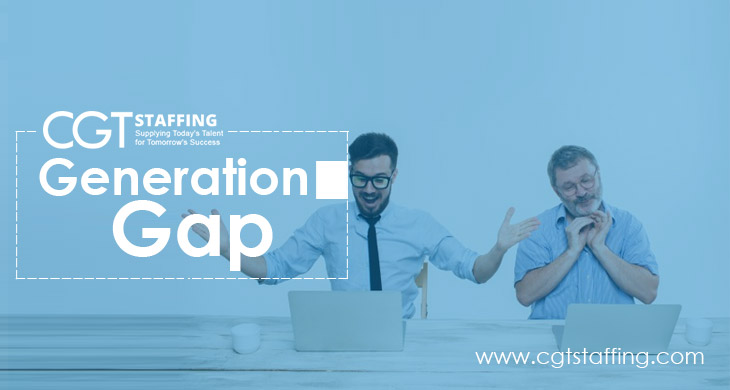The work ethic of each generation has always been a distinct flavor in any age-diverse workplace. This is fairly evident from the way talent acquisition policies have evolved over recent years. The workplaces of today are far more inclusive than at any point in history. And while there is still a long way to go, most workplaces have made efforts to eliminate biased hiring. Of course, bias does not limit itself to race, ethnicity, religion, gender, or even political leanings. It can also include the age factor, and it can work both ways.
The way age bias works is usually indicative of the generation occupying key management and C-level positions. In most commercial entities, employees have targets and performance indicators. These help measure the success of a particular employee or team at the end of a defined period (usually in the form of a performance appraisal).
In most cases, organizations do their best to be equal-opportunity employers in any and all ways. But unconscious age-bias can still trickle in at any stage from the drafting of HR policies to the initial onboarding of a new hire to even the way the workplace culture treats certain workers. Only the recipient of this bias changes, based on which generation dominates higher management.
Table of Contents
Generation Gaps in the Workplace and How to Combat Them
Generation gaps in the workplace aren’t uncommon. Workforces have never been this diverse, with four distinct generation demographics currently occupying all types of organizational roles. Baby Boomers (aged 57-75), Gen X (aged 41-56), Gen Y or Millennials (aged 25-40), and Gen Z (aged 25-29). Each of these generations grew up in a unique set of circumstances, economic cycles, and social conditions. While this does not stereotype a member of any generation, it does play into how they shape their distinct work ethics.
Each generation has different priorities, ranging from compensation and benefits to a better work-life balance to remote working privileges. And while these priorities might change as workers get older, it still makes for gaps between different generations of workers.
While a diverse workforce with generation gaps is something to aspire to, a workforce with gaps appearing in communication, workflow, team synergy, or business vision as a result of the generation gap, isn’t. Of course, the worst way to fix that is to try and homogenize the average age your workforce. That will only kill diversity and all the benefits of shared experiences and expertise working together to a common goal. Instead, here’s how you can try to bridge this gap:
Use Mentorship Programs to the Fullest
Mentorship programs don’t always have to be about an older business veteran handing out insider tips and tricks to a hungry young professional. A relationship that only benefits one party is hardly fair, and will usually only yield limited results at best. However, mentorship programs can just as easily be two-way learning if configured correctly. A mentorship program at your workplace could pair different workers together in situations where both can benefit from the other’s unique perspective and work ethic.
Encourage Fluid Leadership Techniques
Business leaders aren’t necessarily born. Leadership development programs can often help you discover dynamic trailblazers among your existing workforce. They don’t necessarily have to follow a rigid program; a leader could just as easily be a younger Gen Z worker as it could be an experienced Boomer worker.
In fact, fluidity in leadership should encourage all workers, regardless of age or generation, to take up leadership and initiative whenever the need calls for it. Excluding a worker’s leadership ability based on age is an outdated concept. Instead, work to nurture and empower leadership potential wherever you see it.
Figure Out Efficient and Effective Communication Flows
Bad communication has been the death of many otherwise successful business organizations. You could staff each and every role in your workforce with the best possible candidates available. You could reconfigure your hiring efforts and coordinate with your staffing agency for quicker turnaround times to fill talent gaps. You could source, hire, and onboard the best cadre of talent in your area. Unfortunately, none of these efforts will show much success without the key ingredient known as efficient communication.
Communication gaps can often increase in significant between various workforces. However, this may not mean any party is at fault. Look into offering a better way for workers to communicate their needs and expectations clearly to their peers, line managers, and subordinates. A safe environment based on mutual respect, constructive input, and collaborative spirit can be exactly the catalyst you need to boost synergy between workers with generation gaps.
Encourage Appropriate Social Interactions to Build Team Spirit

Despite your best efforts as a manager, you have likely already come across workers who face a difficult transition into a new team. This doesn’t always have roots in social ability or competence issues. It can also be the result of a gap in perception, usually precipitated by a generation gap. What may seem like appropriate office behavior to one generation of workers may not appear so to others.
In order to help workers with generation gaps integrate better with new teams, look for social opportunities outside of every day work. Encourage employees to interact in situations that aren’t driven by tight deadlines or billable hours. This may help them find common ground to connect over, and fit into their new role much faster.
Recommended Reading:
